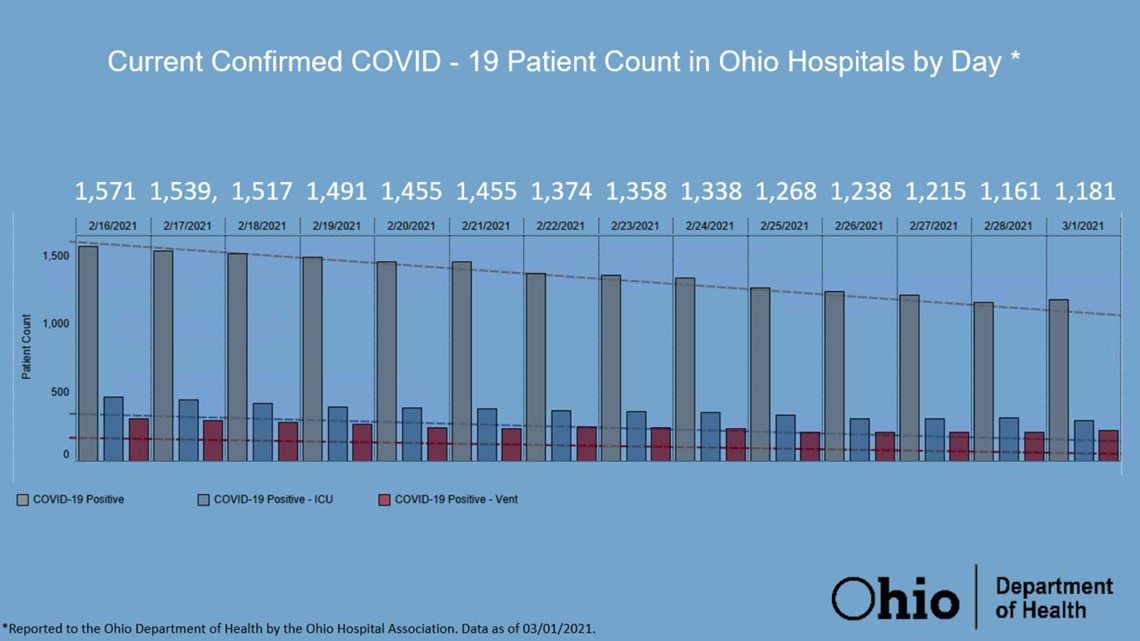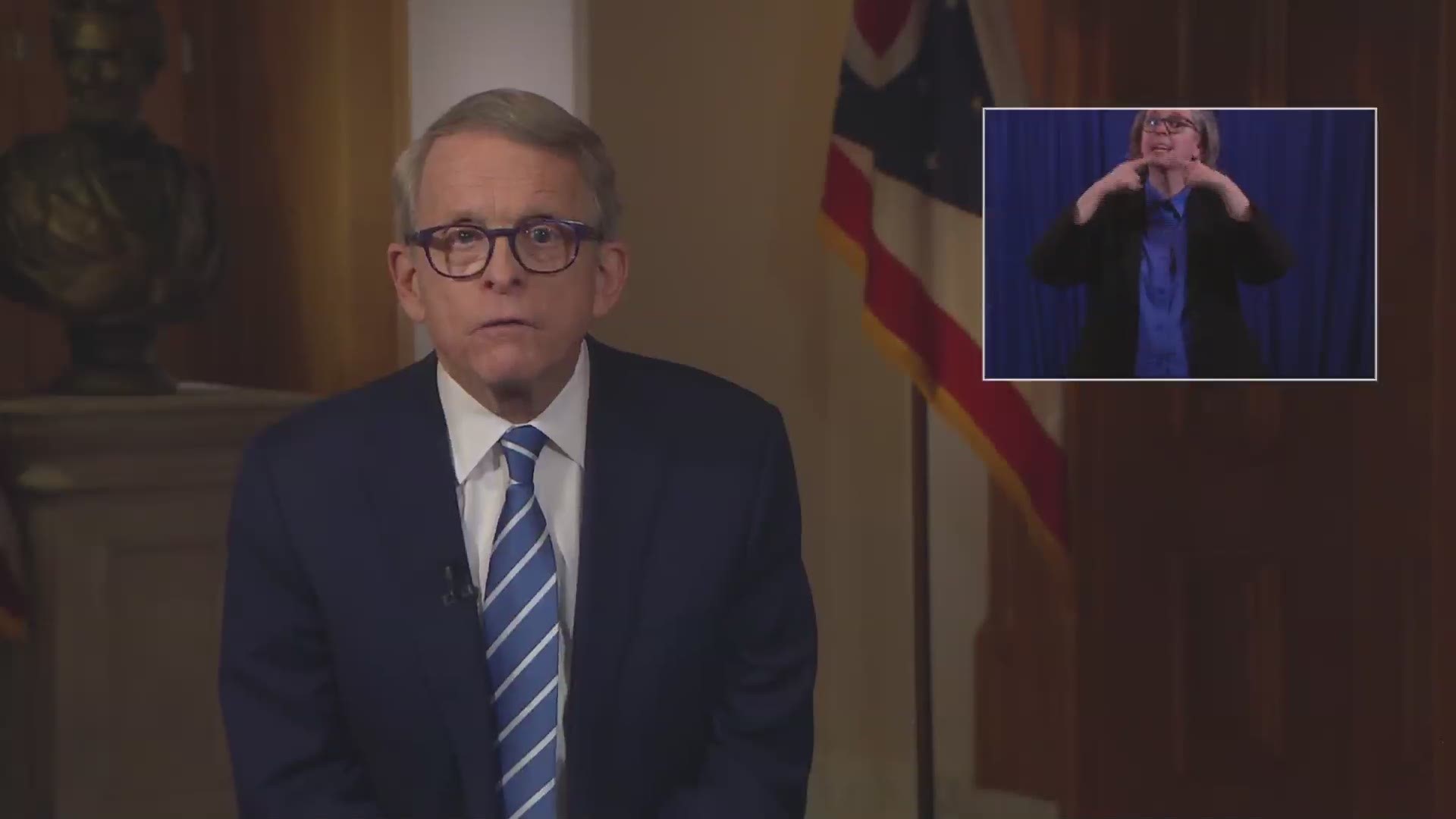COLUMBUS, Ohio — Ohio Gov. Mike DeWine held a statewide address Thursday evening, announcing what criteria must be met in order for all COVID-19 restrictions to be lifted in the state.
The address comes just one year and a day after the governor made the decision to cancel the Arnold Classic. He called March 4, 2020 "the first full day in this fight."
"This has been a tough year. Many of you have lost a parent, grandparent, sibling, spouse, some of you have even lost a child; some of you have lost a job, some of you have lost your business," DeWine said.
However, the key focus of Thursday's address was on what lies ahead. DeWine pointed toward the three COVID-19 vaccines and mask compliance as the keys to getting back to normal.
"We know what we need to do to get to the other side of this," he said.
As the state looks forward to a spring with graduations, proms, concerts and festivals, DeWine acknowledged that we won't start back right away at full capacity.
On Wednesday, Ohio Department of Health Director Stephanie McCloud signed adjusted health orders, allowing spectators for spring events, but limiting capacity to 25% for indoor venues and 30% for outdoor venues.
DeWine said that while we are starting out the season with capacity limits, these restrictions will continue to loosen as more Ohioans get the vaccine. He said these percentages will grow until the state has full stadiums, concerts and theaters.
But, how do we know when we get there?
CRITERIA FOR REOPENING OHIO
DeWine said that all coronavirus-related health orders in the state would be lifted once it sees 50 or fewer cases per 100,000 people for a two-week period.
As of Wednesday, the state was at 179 cases per 100,000 people, but for perspective, that is a big drop from how the state faired just three months ago.
On Dec. 3, 2020, Ohio was at 731 cases per 100,000 people for the previous two weeks. On Feb. 3, 2021, that number dropped to 445. This means that over the last three months, the state went down 550 cases per 100,000 people and in the last month alone, it has gone down 265 cases.
"Achieving this goal is very doable. We can do this, and I know we will," DeWine said.
Thursday also marked the first day of Phase 1C and Phase 2 COVID-19 vaccinations in the state. The expanded eligibility was announced by DeWine on Monday.
MONDAY
NEXT PHASE ANNOUNCED
On Monday, DeWine announced which Ohioans would qualify under Phase 1C of vaccination, including those with certain medical conditions and a variety of occupations.
Phase 2 of vaccination will also kick off soon, starting with Ohioans 60 and older.
Both Phase 1C and Phase 2 eligibility begin Thursday, March 4.
Approximately 246,000 people are eligible under the 1C group. Phase 2 adds approximately 695,000 eligible Ohioans, DeWine said Monday.
Here's a look at who will qualify this week:
MEDICAL CONDITIONS
DeWine said the following medical conditions would qualify under Phase 1C:
- Those with Type 1 diabetes
- Those who are pregnant
- Those who have bone marrow transplants
- Those with ALS
OCCUPATIONS
Those working in the following industries qualify for vaccination under Phase 1C:
- Childcare Services
This includes administrators, lead and assistant teachers, and substitutes enrolled in Ohio's Professional Registry who are currently working in open child care and pre-K programs. DeWine said licensing specialists employed by the Ohio Department of Job and Family Services or county Job and Family Services agencies also fall into this group.
- Funeral Services
This includes embalmers/morticians, funeral home directors, crematory operators and apprentices.
- Law enforcement and corrections officers
This group is fairly expansive, according to DeWine's definition. It includes sworn law enforcement officers and peace officers who have first responder or direct supervisory responsibilities. These persons must be active-duty, i.e. working a regular minimum of 20 hours per week. This does not include retired, "special" or reserve persons.
This group also extends to corrections staff, including probation and parole staff who provide direct services to an adult or juvenile inmate or a court-supervised individual.
DeWine said individuals who have a valid active firefighting certificate in the state of Ohio who are active members or employees of a recognized Ohio fire department also qualify Thursday. This does not include retired, emeritus, or reserve individuals.

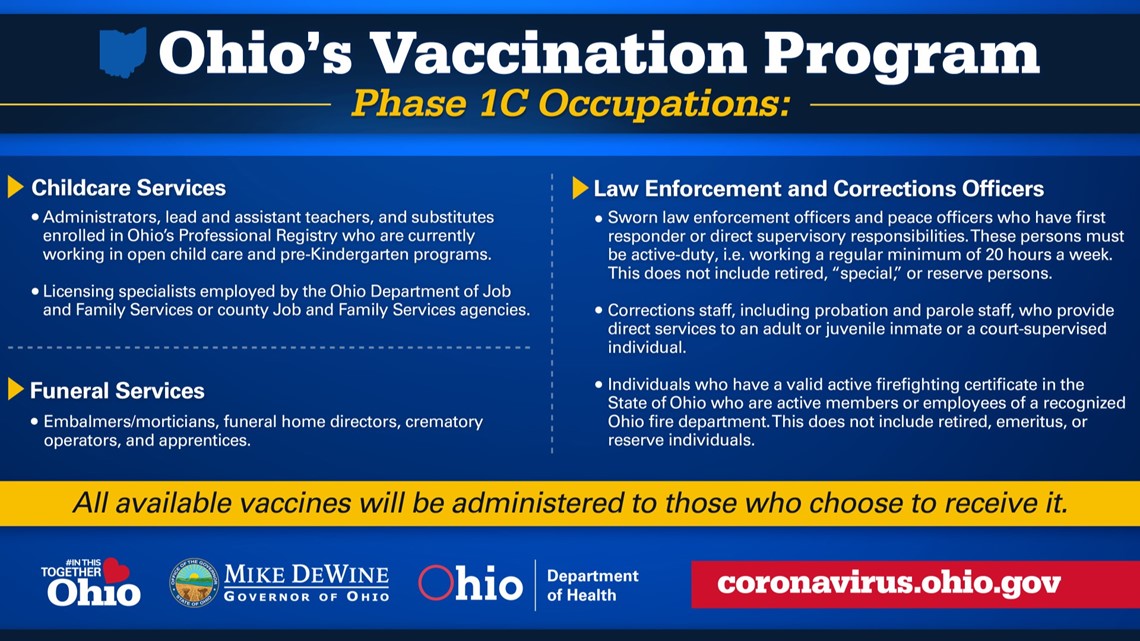
THOSE 60+
DeWine said Monday that the age qualifier for the COVID-19 vaccine would be lowered to those 60 and older, beginning Thursday, March 4, marking the first group of Phase 2.
According to the governor, at least 97% of covid-related deaths have been in Ohioans 50 and above, making age a key part of the state's vaccination plan.
DeWine did not announce when the age would lower again in the state, although more information should be on the way in the coming weeks.

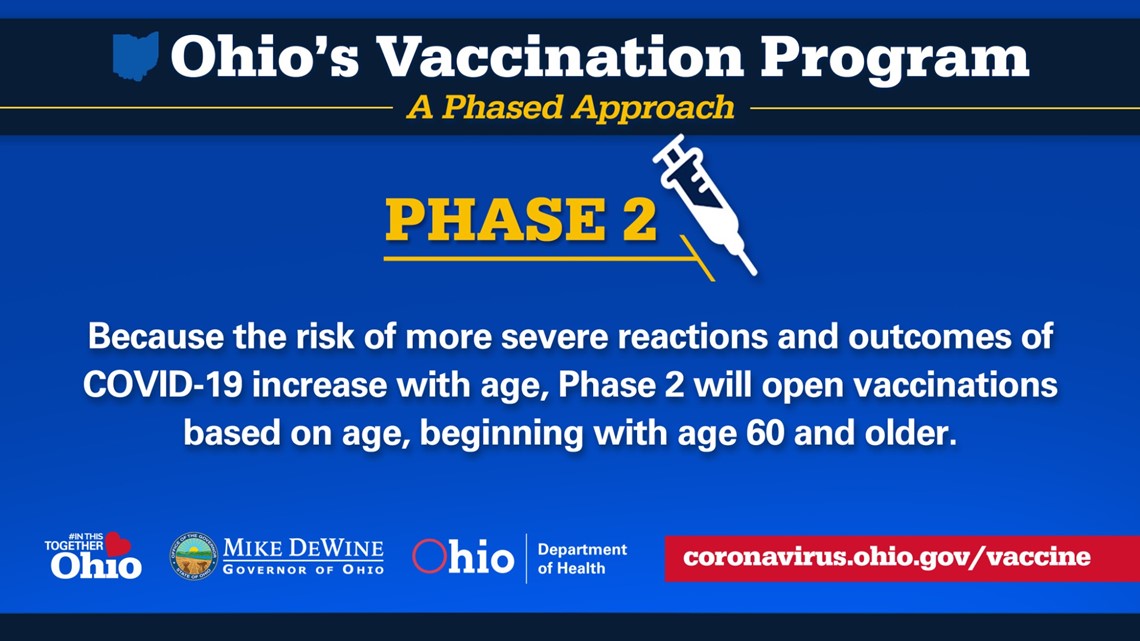
VACCINE SHIPMENTS INCREASE
Shipments of the vaccine are increasing in Ohio, especially following the FDA's approval for emergency use authorization of the Johnson & Johnson one-dose shot.
This week, DeWine said, Ohio will receive 96,100 doses of the new J&J COVID-19 vaccine. With these doses, the state will have a total of 448,390 shots for the week of March 1, by far the most Ohio has had since COVID-19 vaccines were first available.
As the amount of the vaccine available increases, more opportunities to receive it are created.
The state will be sending the Johnson & Johnson vaccine to more than 200 independent pharmacies across Ohio. For most of these pharmacies, it will be the first time they have the vaccine. Doses will also go to local hospitals, health departments, and chain pharmacies.
SCHOOLS
Monday, March 1 was the state's deadline for schools that signed on to receive the vaccine to return to some form of in-person learning.
All public schools in the state besides one agreed to return.
As of Monday, approximately 200,000 K-12 school personnel have been vaccinated in Ohio.
In Jan., nearly 50% of Ohio’s students were in districts offering no in-person classes. On Monday, that number was reported to be less than 10%.
COVID-19 DATA
On Monday, the Ohio Department of Health reported:
- 1,452 new cases of coronavirus compared to the 21-day average of 2,225
- 49 coronavirus-related deaths compared to the 21-day average of 269
- 103 new coronavirus hospitalizations compared to the 21-day average of 129
- 14 new coronavirus ICU admissions compared to the 21-day average of 14

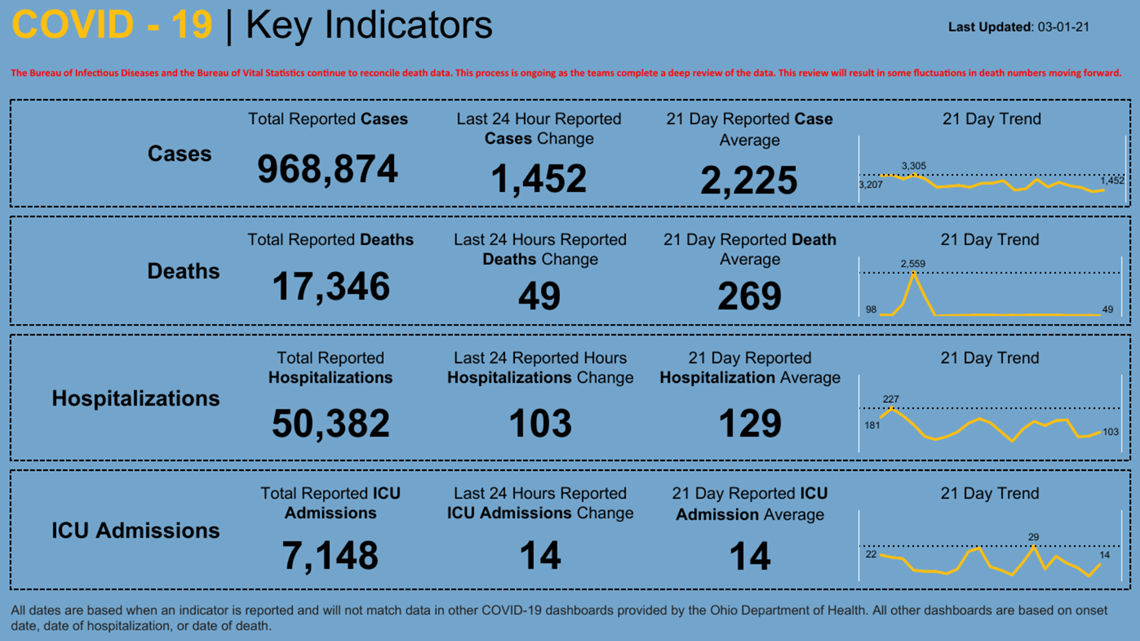
On Monday, there were a total of 1,181 COVID-19 positive patients in Ohio hospitals. That number is slightly above where it was Sunday, which was reported at 1,161. However, it is still lower than the weeks and months before.

